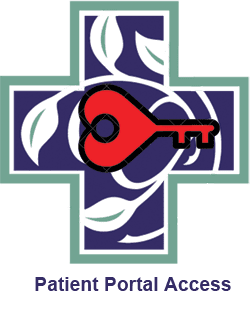NoaNet Interview for their ENewsletter
I recently had the opportunity to provide some information for NoaNet’s ENewsletter that they produce. I’m sure that the format will require that they edit the content of my responses greatly, I thought I would share the full response here. A little background: NoaNet was selected to build out a fiber optic network into rural communities throughout Washington State, including Dayton. By extending their already expansive network, they will be able to provide critical telecommunications services to communities like ours that have traditionally lagged behind many of the larger cities surrounding us.
Hi Shane,
Thanks again for your time. As I mentioned the goal is to include a short section (a paragraph or two) on how high-speed broadband access benefits local hospitals like Dayton General in the next NoaNet Enewsletter. If you’re interested, you can see previous Enewsletters here: NoaNet ENewsletters.
Here are the interview questions we were hoping to ask you. Any information is helpful.
Is Dayton General Hospital currently connected to NoaNet broadband fiber service? If not, when do you believe it will be connected?
We are not currently connected, the fiber has been delivered to the buildings and we believe that services will be up first quarter of 2013.
How will high-speed broadband Internet benefit the Dayton General Hospital?
Both the Federal and State governments have established policies and incentive programs to encourage healthcare organizations to invest and adopt systems that will support Electronic Healthcare Records. These Meaningful Use initiatives require, among other things, electronic communication to update Immunization Databases, transfer syndromic surveillance data to Public Health, and the secure, electronic transmission of key clinical information among providers of care and other patient authorized entities. In addition to these government incentive programs, we’ve also established interfaces to our reference lab, radiology service provider, and Inland Northwest Health Services (INHS) for telehealth opportunities. All of these services are in addition to the direct connections we maintain to our Rural Health Clinic in Waitsburg and our local pharmacy. We’ve struggled to maintain communications integrity and performance, under the demand of all these competing needs, while utilizing older telecommunications technologies that are both expensive and highly restrictive. NoaNet’s broadband services will allow us to better fulfill the requirements of a modern day Electronic Medical Records System in an ever increasingly interconnected industry.
How will this service enable patients to receive better, faster or more efficient care? Can you give any specific examples?
One of the largest hurdles that rural healthcare facilities faced, with the delivery of healthcare in a modern age, was the electronic and telecommunications infrastructure, enjoyed for years, by facilities located in metropolitan areas. Healthcare facilities in Spokane have had access to fiber optic based telecommunications mediums since the late 90’s. High speed interconnection and the subsequent ability to quickly share diagnostic information with specialists truly elevates the quality of care and the responsiveness of that care. At the same time that images from Spokane Hospitals were being electronically transmitted to radiologists, in Dayton, Washington, diagnostic images were placed on a public transportation bus and driven to radiologists in Walla Walla so that they could be read. Thankfully that solution evolved to one where images are transmitted over a T1 line to the Radiologist electronically, but larger studies often take quite a bit of time to send before they can finally be read. It can be said that broadband services delivered over NoaNet’s infrastructure is the next evolution of this example and that it finally closes the gap between solutions available to healthcare facilities in larger metropolitan areas and the facilities in the more rural areas of the State. If NoaNet hadn’t built it, who would have and how many more years would the rural areas have struggled with outdated telecommunications technology?
Any other information you’d like to share on the Columbia County Hospital District or Dayton General Hospital?
In the coming years we expect to see many changes in the healthcare industry as we all work to accommodate a greater number of patients. I would say that Columbia County Health System is a model for the future of Healthcare. While the Federal and State Governments work to make their “Healthcare for All” initiatives become reality, healthcare facilities are looking for ways to accommodate a greater influx of patients in an age of increasingly shrinking margins. Hospital Districts and Critical Access Hospitals have been serving our underserved communities for years and have learned to operate on razor thin margins. We often find ourselves working hard to do more with less without compromising patient outcomes. We are compassionate, have great practitioners and caregivers, and we are increasingly becoming more technologically advanced after a long period of time when it wasn’t financially viable nor available. There may have been a time when the quality of care in a rural setting was not on par with that found in larger hospitals, but today we have to meet the same quality indicators, we rely on the same specialists practicing in the larger institutions, we have electronic medical records systems, transmit diagnostic images to radiologists in Walla Walla and Spokane, interface electronically with large reference laboratories, and will soon be able to do this even more effectively with increased communications capacity. By all measures, we are reducing the once large disparity between the quality of healthcare received in a large institution to that which is delivered in a smaller environment. There will always be a need for specialists and specialized care, but a large percentage of routine care can be delivered efficiently, and cost effectively without sacrificing quality, in our rural healthcare systems as we have gained access and adopted tools and resources not previously available.




